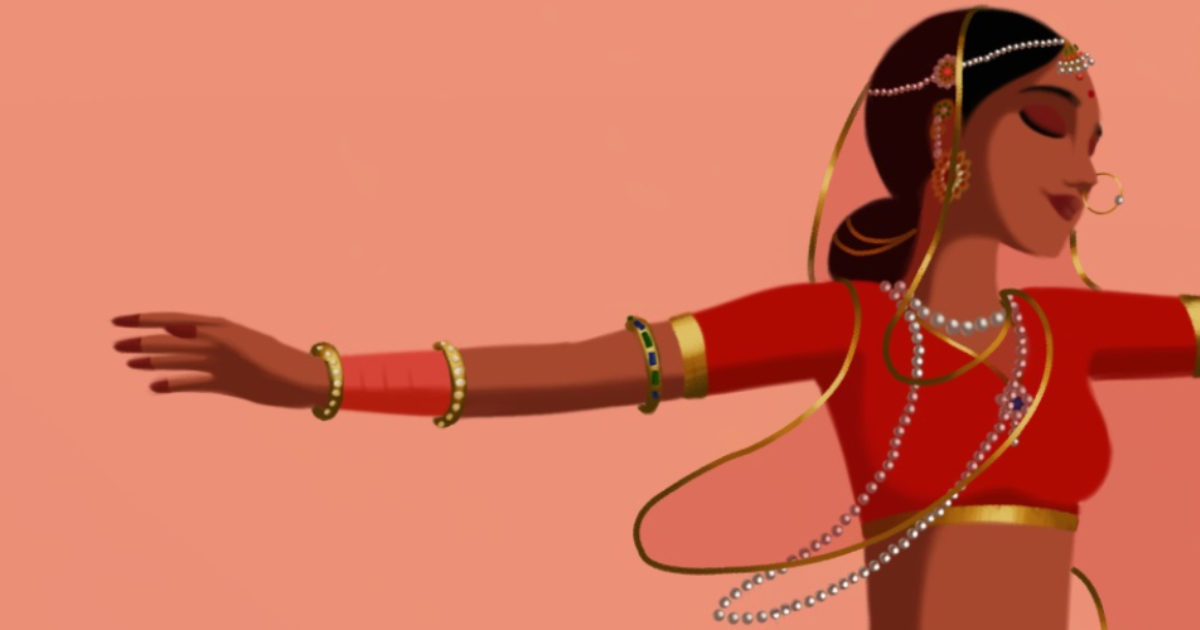Gitanjali Rao / 2019 / India, France, UK, Qatar / 93 minutes
Director, writer and designer Gitanjali Rao presents a beautifully crafted animation that is inspired by true events. The film interweaves different stories that address themes of love, family and childhood. Bombay Rose takes place on the hectic streets of Mumbai, where crime, torment and passion are very much present.
Bombay Rose begins in a cinema. On the screen is an action movie, with a handsome hero beating up the bad guys and getting the girl. The film stops and the cinema audience curse the fact that the kissing scene is being cut. This section of Bombay Rose immediately sets the tone and shows us we are in an environment where love is restricted and freedom of expression is looked down upon. The main focus of the story is Kamala (voiced by Cyli Khare), who is a dancer in a nightclub considering an enforced marriage in order to make money to provide for her younger sister and grandfather. She eventually falls in love with Salim (voiced by Amit Deondi) and looks to build a life with the man she loves, whilst desperately struggling to providing for her family. This story plays alongside the one of elderly English teacher and former Bollywood actress Mrs D’Souza (voiced by Amardeep Jha). Her story is one of memory and reminiscence and feels a little bit of a distraction from the more powerful narrative of Kamala and Salim.
The most immediately noticeable aspect of Bombay Rose is how vibrant and vivid the colours are. The film looks gorgeous, with hand-painted images and fluid animation. The colours leap from the screen and grab your attention. However, the downside of this comes when we are dealing with dark subjects. When we should be seeing the grit, grime and chaos of the location, we still feel that we are in a beautiful and desirable location. The threat and menace therefore feels very benign and nowhere near intimidating enough. The exception is the representation of the evil gangster who threatens Kamala. He occasionally turns into a menacing bird and it is a striking effect which could only be achieved by using animation. This magical realism influence feels very underused and it would have been nice if the combining of folklore and realism was fully embraced.
Bombay Rose is filled with melodrama and evocative imagery. The hustle and bustle of Mumbai is shown in a beautiful and engaging manner and the film is delightful to watch, but a greater focus on one particular story or character may have made the film a more powerful experience.
